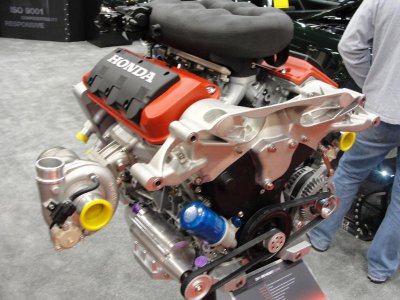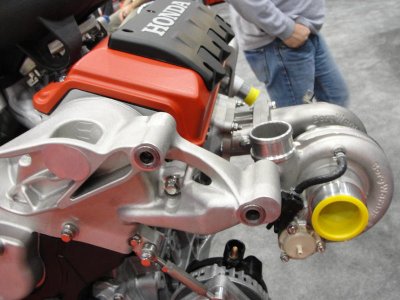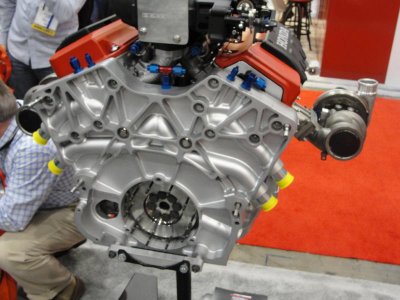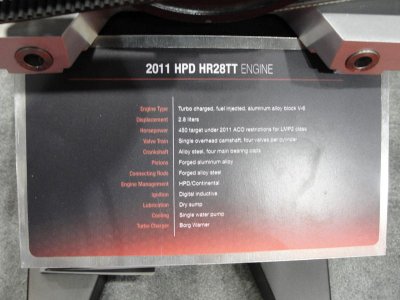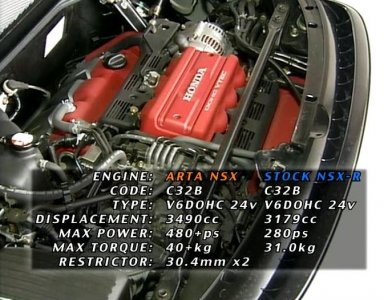I agree with you, though you have to remember how Porsche is doing it compared to Honda. There were aluminum cars back in the 1980's, but they were essentially hand-made. Picture a grizzled old man with a silver mustache and leather overalls painstakingly bending and forming each body panel by hand. That is how Porsche builds supercars, along with McLaren, Ferarri, etc. They are hand-built craft projects, which is why they are so incredibly expensive. This is not the Honda Way. Instead, Honda used its engineering genius to find a way to apply mass production concepts and Japanese efficiency to these exotic materials and designs.
The engineers have four major areas to tackle to hit Ito's 3000 pound goal:
1. Powertrain --> Honda already knows how to lighten a J engine. For example, they shaved off 30 lbs for the J30A4 that was in my old 2004 Accord Coupe 6MT. Thus, the real engineering challenge is to keep the hyrbid portion from getting too fat. A dual clutch semi-auto trans is very heavy and complicated compared to a manual trans. Fortunately, Honda has been developing this system since at least 2008 for the failed HSV-10, so they have a lot of data. Similarly, they need to make the 3 motors as light as possible without sacrificing reliability. Honda already has said the battery pack weight is "minimal" and they are comfortable with that piece of the system. Finally, Honda already has made the SH-AWD differential system 100 lbs lighter than the version that is in my 2009 RDX. Figure on a bit more for the NSX.
2. Body and Frame --> Lots of room for savings here, especially in the non-structural body panels. I agree that we probably won't see plastic, unless Honda can engineer a material that is rigid and takes paint well. Maybe? Like I said, I think they are going to make a run at "economical" mass-produced CF. The frame is a really fun question. Will they go with a stamped aluminum unit-body like the NSX? They already know how to do that, so there are some cost savings. Or, will they go tube frame? Obviously, tube frames are expensive because most are hand-welded and fitted. Perhaps Honda will figure out a way to robot-weld a tube frame on the line? A tube frame would be lighter than a unit-body. Also, we'll probably see thin glass used all over.
3. Interior and Accessories --> Like the original NSX, I think Honda is going to attack every item in the car for weight savings, from the A/C to the seats to the steering wheel and shift knob. Also, as mentioned previously, I think they are going to take on the sound-deadening material, which adds a ton of weight. With today's technology like active noise-cancelling (an existing Acura feature), there is no need to slap mats of heavy rubber all over the car.
4. Suspension --> Acura uses active magnetic suspension in some of its cars, but this is likely too heavy for NSX. I think the best solution is to use the existing NA2 front and rear wishbone layout and components- they are proven and light. Given the US-based production, Honda should partner with a domestic company like Penske to develop high-performance monotube shocks and use Hyperco springs or something similar. These will provide a smooth street ride, but also be very capable on the track. A domestic parts source would keep costs down. No sense in having Showa do it overseas. Same with the brakes. I know the massive Porsche brakes look cool on the auto show circuit, but if NSX comes in below 3000, it won't need such giant and heavy brakes. They should go with a solution using domestically-sourced aluminum monoblock calipers. There are plenty of companies like Baer or Wilwood who could do this. Again, it keeps the cost down and provides weight savings and high performance.
Insightful as always counselor!
Question? On the 100lbs weight saving on the powertrain that's because it's all electric now right? So basically the added awd weight is also no longer in the equation.






